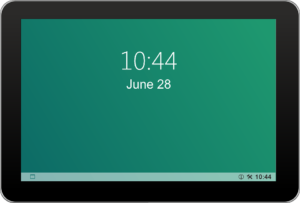
Resistive is a common form of touchscreen technology. It’s used in everything from tablet computers and smartphones to human machine interfaces (HMIs), smart appliances and more. Resistive, in fact, is the second-most common touchscreen technology, surpassed only by capacitive.
All resistive touchscreens use a mechanical method of operation. They are made of electrically resistive layers, both of which feature electrodes that face each other. When you touch the display interface, the two layers will press together. Even if you know how they work, though, you might be unfamiliar with the parts of a resistive touchscreen. This post breaks down the different parts of a resistive touchscreen.
Top Layer
Resistive touchscreens feature a top layer. The top layer is typically made of glass or plastic, resulting in transparency. The underside of the top layer is designed with patterned electrodes. There aren’t any electrodes on the top surface of this layer. Rather, they are only added to the underside of the top layer.
Bottom Layer
In addition to a top layer, resistive touchscreens feature a bottom layer. The bottom layer is typically made of the same material as the top layer. Rather than featuring patterned electrodes on the underside, though, the bottom layer features patterned electrodes on the top of its surface. As a result, the electrodes on the bottom layer face the electrodes on the top layer.
Controller
Resistive touchscreens feature a controller as well. The controller is responsible for converting analog touch signals into digital touch signals. Resistive touchscreens work by applying a voltage to either the top or bottom layer. Performing a touch command will result in the two layers touching each other, in which case the voltage will travel from one layer to the other layer. The controller is designed to recognize touch commands while also converting to digital touch signals.
The top and bottom layers of a resistive touchscreen are separated by a thin layer of air. Voltage will only travel through both layers when you perform a touch command. Touch commands will force the two layers to touch each other. The controller will detect and convert analog touch signals such as this into digital touch signals.
Display
Another common part of a resistive touchscreen is a display. Like most touchscreens, resistive touchscreens are constructed with an integrated display. Liquid-crystal displays (LCDs) are commonly used in resistive, as well as other, touchscreens. The LCD will produce images while simultaneously allowing for touch-based commands.
